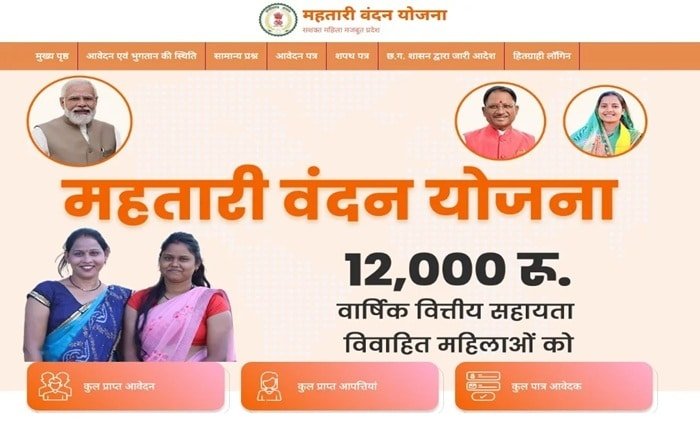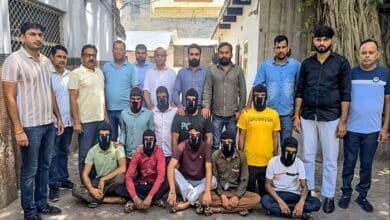
Everything You Need to Know About Mahtari Vandana Yojana: Benefits, Eligibility, and Application Process
The Mahtari Vandana Yojana is a flagship initiative by the Indian government aimed at improving maternal and child health by offering financial assistance to pregnant and lactating women. This welfare scheme ensures better nutrition and healthcare access during and after pregnancy. By addressing the high maternal mortality rate and malnutrition levels, the Mahtari Vandana Yojana significantly contributes to national health goals.
The scheme primarily focuses on economically weaker sections, especially women in rural and tribal areas. The Mahtari Vandana Yojana encourages institutional delivery, complete antenatal care, and immunization, reducing risks during childbirth. Through this financial support, it also eases the burden of wage loss, ensuring the mother can take proper rest during this crucial period.
The Mahtari Vandana Yojana is not just a financial assistance program but a step toward building a healthier and more inclusive India. The core objective is to provide a dignified life to mothers during maternity by helping them focus on their health and the well-being of the child without financial stress.
Eligibility Criteria for Mahtari Vandana Yojana
To benefit from the Mahtari Vandana Yojana, applicants must fulfill specific eligibility criteria as defined by the Ministry of Women and Child Development. The scheme is targeted mainly at pregnant and lactating women who are above the age of 19 and are undergoing their first live birth.
The Mahtari Vandana Yojana eligibility requires that the applicant must be a citizen of India and should not be employed under the central or state government or receiving any other maternity benefit. Also, the applicant must have registered her pregnancy at a government-recognized healthcare facility.
The Mahtari Vandana Yojana also includes a condition where women must attend antenatal care visits and get their children immunized. Only those women who fulfill these conditions are eligible to receive the installments under the scheme. Furthermore, Aadhaar card, bank account details, and maternal health registration documents are mandatory for verification and disbursal of benefits.
Key Benefits Provided Under Mahtari Vandana Yojana
The Mahtari Vandana Yojana offers monetary support of ₹5,000 to eligible women in three installments throughout the maternity period. This assistance helps cover medical expenses, nutrition, and basic needs during pregnancy and after delivery.
Under the Mahtari Vandana Yojana, the first installment of ₹1,000 is provided upon early registration of pregnancy at an Anganwadi or government healthcare center. The second installment of ₹2,000 is disbursed after the completion of at least one antenatal checkup, and the third installment of ₹2,000 is given after the birth of the child, following the administration of the first cycle of immunization.
One of the crucial benefits of the Mahtari Vandana Yojana is that it encourages safe and institutional deliveries, helping in reducing maternal and neonatal deaths. Additionally, by covering wage loss, it allows women to take adequate rest, which is essential for both maternal and child health.
Application Process for Mahtari Vandana Yojana
The application process for the Mahtari Vandana Yojana is designed to be simple and accessible, especially for women in rural and backward regions. Beneficiaries can apply online or offline, depending on the availability of digital resources.
To apply for the Mahtari Vandana Yojana, the applicant must visit the nearest Anganwadi center or a government hospital. The staff at these centers help fill out the application form and assist with document submission. Key documents include proof of pregnancy, identity documents, bank account details, and Aadhaar card.
In states where the Mahtari Vandana Yojana portal is active, women can register online using their personal and medical details. Once verified, the beneficiaries receive updates through SMS, and the amount is credited directly to their bank accounts. The process is monitored by the Ministry of Women and Child Development to ensure transparency and timely disbursal.
Role of Anganwadi Centers in Mahtari Vandana Yojana Implementation
Anganwadi centers play a vital role in implementing the Mahtari Vandana Yojana, especially in remote areas. These centers act as the primary points for registration, documentation, and monitoring of the scheme’s progress.
As per the Mahtari Vandana Yojana guidelines, Anganwadi workers help expectant mothers in enrolling for the scheme, submitting necessary documents, and ensuring they receive the benefits on time. They also conduct regular health checkups, distribute supplements, and provide counseling on nutrition and maternal health.
The presence of Anganwadi centers ensures that the Mahtari Vandana Yojana reaches the grassroots level. Their proactive involvement improves awareness and participation among women, especially those who are unaware of such welfare schemes. They are instrumental in reducing delays and errors in benefit distribution.
Impact of Mahtari Vandana Yojana on Maternal and Child Health
Since its inception, the Mahtari Vandana Yojana has positively impacted the lives of millions of women across India. It has led to an increase in early pregnancy registration, institutional deliveries, and better child immunization rates.
Studies show that the Mahtari Vandana Yojana significantly reduces cases of maternal malnutrition by promoting timely intake of iron and folic acid supplements. It has also improved postpartum care by encouraging women to rest and recover adequately without financial strain.
Furthermore, the Mahtari Vandana Yojana has led to increased engagement between pregnant women and healthcare systems. This interaction helps identify high-risk pregnancies and ensures timely intervention. The scheme’s financial assistance model has become a benchmark for other maternity welfare programs across the country.
Challenges and Future Scope of Mahtari Vandana Yojana
While the Mahtari Vandana Yojana has achieved considerable success, it also faces challenges like low awareness, delays in fund disbursement, and difficulties in document verification. In many cases, women in tribal or interior areas are unaware of the scheme or do not have access to necessary documentation.
To make the Mahtari Vandana Yojana more effective, the government is focusing on integrating it with digital health records, improving data collection, and enhancing communication between health workers and beneficiaries. Increased training for Anganwadi workers and midwives is also being considered.
The future of the Mahtari Vandana Yojana lies in strengthening its reach through mobile-based health tracking systems, multilingual awareness campaigns, and partnerships with NGOs. With these upgrades, the Mahtari Vandana Yojana can become more inclusive and serve as a model for women’s welfare globally.
Conclusion
The Mahtari Vandana Yojana is more than a government scheme—it is a transformative initiative that empowers women during one of the most critical phases of their lives. By offering financial support, healthcare access, and nutritional assistance, the Mahtari Vandana Yojana reduces maternal risks and enhances child survival rates.
Through consistent efforts and strategic implementation, the Mahtari Vandana Yojana continues to uplift marginalized women and ensure they receive the care they deserve. With increased awareness, better infrastructure, and technological integration, the Mahtari Vandana Yojana is poised to become a cornerstone of maternal healthcare in India.
FAQs
Q1. What is the objective of the Mahtari Vandana Yojana?
The Mahtari Vandana Yojana aims to provide financial assistance to pregnant and lactating women to ensure proper healthcare and reduce maternal mortality.
Q2. How much financial benefit is provided under the Mahtari Vandana Yojana?
The Mahtari Vandana Yojana offers ₹5,000 in three installments to eligible women for their first live birth.
Q3. Who is eligible for the Mahtari Vandana Yojana?
Any pregnant woman above 19 years of age undergoing her first live birth and not receiving other maternity benefits is eligible for the Mahtari Vandana Yojana.
Q4. How can I apply for the Mahtari Vandana Yojana?
You can apply for the Mahtari Vandana Yojana through your nearest Anganwadi center or government hospital by submitting the required documents.
Q5. What documents are required for the Mahtari Vandana Yojana?
Documents needed for the Mahtari Vandana Yojana include an Aadhaar card, proof of pregnancy, a bank account passbook, and health registration details.




